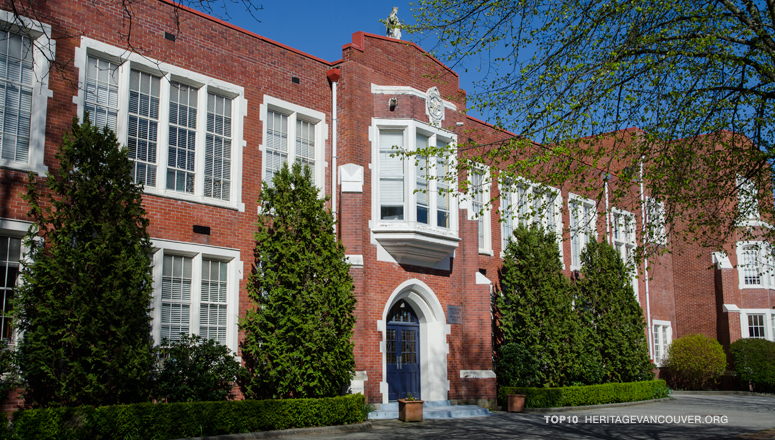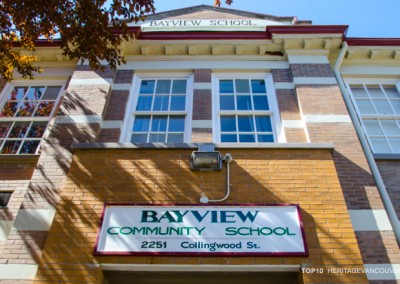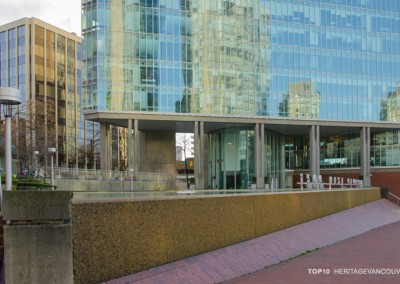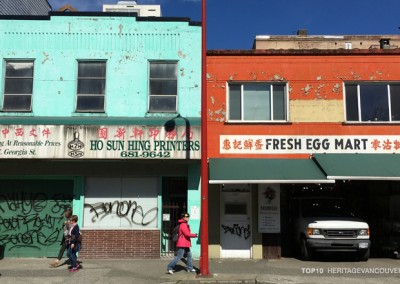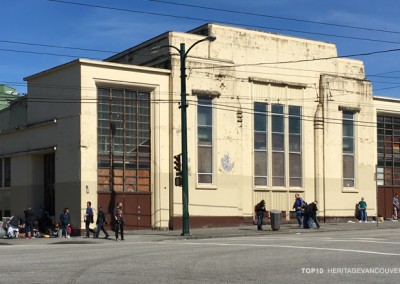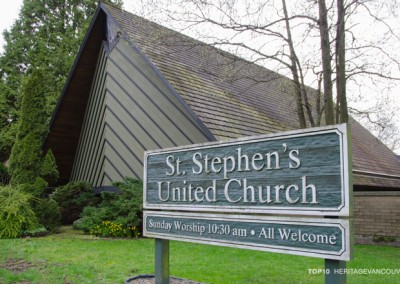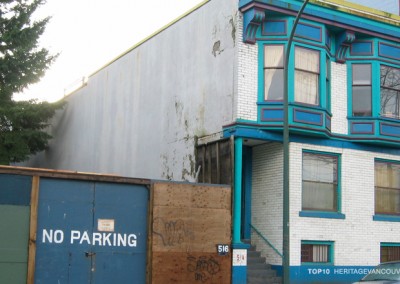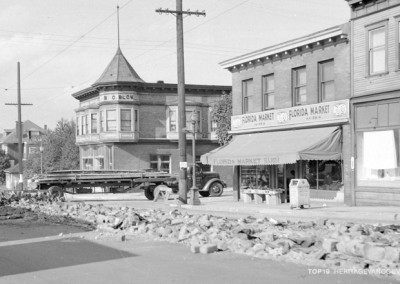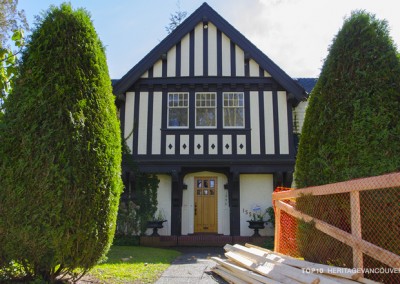Vancouver College is an independent Catholic boys school, offering classes from Kindergarten to Grade 12, and a landmark in the Shaughnessy community. The earliest buildings at Vancouver College are Lannon Hall (1924) and McCormack Hall (1927). Well-known local school, church and residential architects, Twizell & Twizell (the architects of St. Andrew’s-Wesley United Church), designed both striking red brick buildings in Collegiate Gothic style, within an overall campus plan. Mackin Hall completed the Collegiate Gothic core of the campus in 1957.
Vancouver College is seeking renewal of its facilities to improve the learning and physical environment. Current plans involve the demolition of the three original Collegiate Gothic halls – Lannon (1924), McCormack (1927) and Mackin (1957) – to make way for a new 3-storey facility. Vancouver College is listed in the B category of the Vancouver Heritage Register.
Threat
What is the threat to Vancouver College?
Vancouver College is seeking renewal of its facilities to improve the learning and physical environment. Current plans involve the demolition of the three original Collegiate Gothic halls – Lannon (1924), McCormack (1927) and Mackin (1957) – to make way for a new 3-storey facility. Nichol Hall (1964) may be retained and upgraded.
Many other communities, including Victoria – with its many heritage schools – have managed to seismically upgrade their schools without resorting to widespread demolition. Rather than defaulting to demolition, Vancouver College should explore all options to upgrade Lannon, McCormack and Mackin Halls, or if that is not feasible, to retain and restore the facades of these important buildings as part of the redevelopment project.
Significance
Why is Vancouver College significant?
Vancouver College is an independent Catholic boys school, offering classes from Kindergarten to Grade 12. It was founded downtown in 1922, and, in 1924, purchased its present site, 10 acres of land bounded by West 38th Avenue to the north, and the mid-block between West 40th and 41st Avenues to the south, between Hudson and Cartier Streets.
The earliest buildings of Vancouver College were Lannon Hall (1924) and McCormack Hall (1927). As enrollments increased, buildings were added in 1957, 1964 and 1990. Well-known school, church and residential architects, Twizell & Twizell designed the site plan for Vancouver College, including Lannon Hall and McCormack Hall, both striking red brick buildings in the ‘Collegiate Gothic’ style.
Lannon Hall (1924) was named after Brother Jerome Lannon, one of the four brothers sent by the Church on a mission to found the college, and from 1922-1924 was its first administrator.
McCormack Hall (1927) was built with a major donation from James Donald McCormack, known as “Dean of the BC lumber industry.” In 1925, the Vatican had recognized his philanthropy for Catholic youth, when Pope Pius XI bestowed him a Knighthood of St. Gregory.
The south façade of Mackin Hall (1957) completed the Collegiate Gothic complex that defines the campus today.
Position
Heritage Vancouver’s position
Heritage Vancouver supports the retention of Lannon, McCormack and Mackin Halls. We encourage Vancouver College to reconsider the destruction of the historic core of this significant Collegiate Gothic campus.
Heritage Vancouver maintains that the renewal of heritage schools can be achieved successfully in an economic and responsible manner, without resorting to demolition.
Actions
What you can do
We strongly encourage the citizens of Vancouver to:
- Get involved in the discussion about this proposed redevelopment, which involves the demolition of a Heritage Register site.
- Contact Vancouver College for information on the plans for their school site, and opportunities for public comment and community engagement.
- Write to the Vancouver College Board or your local MLA and let them know that you support the retention of Lannon, McCormack and Mackin Halls as part of the school facility renewal project.
